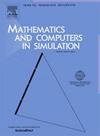Dynamical system modelling for picture fuzzy multi-criteria public opinion on transportation infrastructure
IF 4.4
2区 数学
Q1 COMPUTER SCIENCE, INTERDISCIPLINARY APPLICATIONS
引用次数: 0
Abstract
This work presents a novel approach for modelling dynamic fuzzy multi-criteria decision-making problems. We consider a problem where members of a population evaluate alternatives under a given criterion by taking either of three options: agree, neutral, or disagree. The physical partitioning of the population gives rise to the notion of describing the performance of alternatives under multiple criteria as Picture fuzzy sets, with operations that can aggregate multi-criteria performance into real numbers. Then, the dynamic performance of the alternatives is described by considering the interactions of the partitions of the populations, modelled as a system of differential equations constructed for each criterion. We provided proof of the basic properties of each system, including nonnegativity and boundedness of solutions, and presented the points of convergence. Parameter values were estimated by performing time-series clustering. The proposed approach was applied numerically in modelling multi-criteria public opinion of a bus rapid transit project—a single alternative, where nine criteria were evaluated. Initial performance values under multiple criteria were obtained using a survey, and four scenarios representing possible government interventions were evaluated. The time-dependent performance profiles of the public about the project were obtained, with insights indicating the efficacy of the proposed model.
交通基础设施舆情的图象模糊多准则动态系统建模
本文提出了一种动态模糊多准则决策问题建模的新方法。我们考虑一个问题,在给定的标准下,一个群体的成员通过三种选择中的一种来评估备选方案:同意、中立或不同意。人口的物理划分产生了将多个标准下的备选方案的性能描述为图像模糊集的概念,其操作可以将多标准性能聚合为实数。然后,通过考虑种群分区之间的相互作用来描述备选方案的动态性能,并将其建模为针对每个准则构建的微分方程系统。我们证明了每个系统的基本性质,包括解的非负性和有界性,并给出了它们的收敛点。通过时间序列聚类估计参数值。所提出的方法被应用于快速公交项目的多标准公众意见的数值模拟中——一个单一的选择,其中九个标准被评估。通过调查获得了多个标准下的初始绩效值,并评估了代表可能的政府干预的四种情景。获得了公众对项目的时间依赖绩效概况,并对所提出模型的有效性进行了深入了解。
本文章由计算机程序翻译,如有差异,请以英文原文为准。
求助全文
约1分钟内获得全文
求助全文
来源期刊

Mathematics and Computers in Simulation
数学-计算机:跨学科应用
CiteScore
8.90
自引率
4.30%
发文量
335
审稿时长
54 days
期刊介绍:
The aim of the journal is to provide an international forum for the dissemination of up-to-date information in the fields of the mathematics and computers, in particular (but not exclusively) as they apply to the dynamics of systems, their simulation and scientific computation in general. Published material ranges from short, concise research papers to more general tutorial articles.
Mathematics and Computers in Simulation, published monthly, is the official organ of IMACS, the International Association for Mathematics and Computers in Simulation (Formerly AICA). This Association, founded in 1955 and legally incorporated in 1956 is a member of FIACC (the Five International Associations Coordinating Committee), together with IFIP, IFAV, IFORS and IMEKO.
Topics covered by the journal include mathematical tools in:
•The foundations of systems modelling
•Numerical analysis and the development of algorithms for simulation
They also include considerations about computer hardware for simulation and about special software and compilers.
The journal also publishes articles concerned with specific applications of modelling and simulation in science and engineering, with relevant applied mathematics, the general philosophy of systems simulation, and their impact on disciplinary and interdisciplinary research.
The journal includes a Book Review section -- and a "News on IMACS" section that contains a Calendar of future Conferences/Events and other information about the Association.
 求助内容:
求助内容: 应助结果提醒方式:
应助结果提醒方式:


